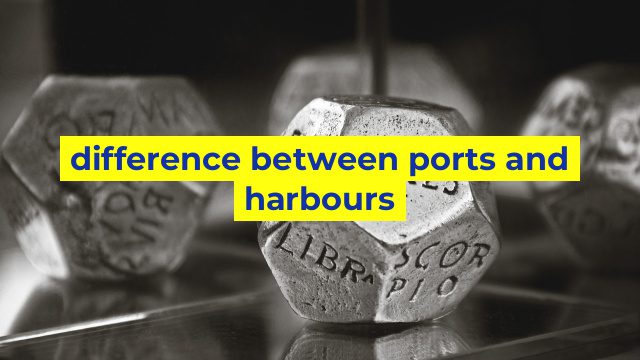The Difference Between Ports and Harbours: Explained
When it comes to maritime infrastructure, ports and harbours are often terms that are used interchangeably. However, there are subtle differences between these two facilities that are important to understand, especially from an operational and managerial standpoint. Let’s take a closer look at what differentiates a port from a harbour.
Ports Explained
A port is an infrastructure facility that provides a terminal for vessels to load and unload cargo or passengers. In simple terms, a port is a place where ships dock to load or unload their cargo. Ports usually have piers or wharves, docks, and cranes to move cargo from the ship to the land, or vice versa. In addition, most ports have storage facilities where cargo is kept before being transported to its final destination.
Ports are usually situated at the mouth of a river or along a seacoast. They are typically designed to handle large vessels such as container ships, bulk carriers, and tankers. Ports require substantial investments in infrastructure and equipment to support the movement of goods and people. As a result, they are often operated by government agencies, private companies or a combination of the two.
Harbours Explained
A harbour, on the other hand, refers to a natural or man-made sheltered area of water that provides a safe anchorage for ships. Harbours are usually located inside bays, estuaries or along coastlines. They serve as a place for ships to anchor and wait for favourable weather conditions or tides before continuing their journey. They can either be a commercial or recreational facility.
Harbours may have limited amenities compared to ports, such as fewer cranes, less storage facilities or little dry dock facilities. Since harbours are smaller in size and scope, they often do not have the same level of commercial activity as ports. In general, harbours tend to cater to smaller vessels such as fishing boats or pleasure craft.
Distinguishing Between Ports and Harbours
The main difference between ports and harbours is their function. Ports are designed to facilitate the movement of cargo and passengers on a large scale, whereas harbours provide a safe place for ships to anchor and wait for favourable conditions. Ports are usually larger and handle more commercial activity, while harbours tend to be more recreational or fishing-oriented.
In conclusion, the difference between ports and harbours may seem subtle, but it’s important to understand the distinction. Whether you’re involved in shipping, logistics or tourism, knowing the proper terminology will help you communicate more clearly and effectively. By being aware of the differences between ports and harbours, you’ll be able to choose the best facility for your business or recreational needs.
Table difference between ports and harbours
| Ports | Harbours |
|---|---|
| Facilities for loading and unloading cargo and passenger ships | Natural or artificially created sheltered areas for boats and ships to moor or anchor |
| Often located at the mouth of a river or on the coast of a sea or ocean | Can be found along rivers, lakes, or on the coast |
| Can handle large container ships, tankers, and bulk carriers | Houses smaller boats and yachts, fishing vessels, and pleasure craft |
| Can have specialized facilities for handling specific types of cargo, such as grain or automobiles | May offer services such as boat repair and maintenance, fueling, and storage |
| May be run and owned by businesses, governments, or a combination of both | Can be privately owned or run by local authorities |

